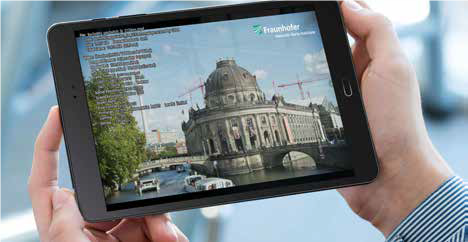
If we want to continue coping with the flood of digital video data in all areas of life in the future, we need a way to compress it efficiently. This is possible with the V VC video compression standard. Where does it currently stand?

If we want to continue coping with the flood of digital video data in all areas of life in the future, we need a way to compress it efficiently. This is possible with the V VC video compression standard. Where does it currently stand?
People used to get cozy in the evenings in front of the television, browsing whatever was on. Now the streaming services are becoming more and more popular.
The situation is similar for telephone calls: traditional audio connections are frequently being replaced by video conferences. As a result, compressed video data now accounts for 80 percent of the world’s Internet traffic. To be able to handle this flood of data in the future as well calls for new compression standards. One of these is Versatile Video Coding, or H.266/VVC – an international standard that Fraunhofer HHI played a major role in developing.
Compared to its predecessor, H.265/HEVC, VVC cuts the bit rate in half while maintaining the same quality. Benjamin Bross, Head of Video Coding Systems Group at Fraunhofer HHI, explains what has happened with the standard since last year. He also gives an update on the open-source VVC encoder and decoder implementations the Fraunhofer HHI researchers have developed.
Mr. Bross, what’s the latest on the VVC standard?
For a great example of how VVC has been established with the help of our implementation, we can look to Brazil: right now the country is developing a new national broadcast standard for their next-generation digital television, TV 3.0. In the midst of these discussions, there was a call to propose a highly efficient codec for encoding videos with up to 8K resolution.
Of all the codecs submitted, the VVC standard we proposed was selected: it was the most efficient, and performed the best in all tests. The first task was to encode a whole series of test videos typical for TV, including in 8K resolution. Here the opensource VVenC encoder we developed at Fraunhofer HHI was used. At the second hurdle, the live demonstration, a live encoder from the world-leading company ATEME encoded the video data, while our VVdeC decoder handled the decoding for playback.
Turning closer to home, VVC was also included and standardized in Digital Video Broadcasting, or DVB. This means that broadcasters in Germany, too, can use VVC for future television transmission, whether terrestrial, cable, satellite or Internet.

What’s been going on regarding the open-source VVenC encoder?
An important factor in encoders is to keep the energy consumption for software decoders as low as possible – all while ensuring high compression efficiency. In this area, we collaborate with the Friedrich-Alexander-Universität Erlangen-Nürnberg. The scientists there are investigating how different encoder parameters affect energy consumption. Together we have developed a parameterization for our VVC encoder, VVenC, which leads to low energy consumption in software decoders.
In another collaboration with Sony and Spin Digital – the latter is a spin-off of Fraunhofer HHI and TU Berlin that specializes in commercial codec development – we demonstrated that VVC is an ideal codec for high-resolution video content in 8K. This is where VVenC’s excellent compression efficiency really shines.
In addition to the open-source VVenC encoder, Fraunhofer HHI has developed an opensource decoder, VVdeC, which decodes the transmitted files at the user’s device.
How do things stand at the moment?
A lot has happened regarding the VVdeC decoder as well. The supported computer architectures have been extended to include ARM processors, so that VVdeC now also runs on mobile devices and new Apple computers with an M1 processor. If the low decoding energy parametrization in VVenC that I mentioned before is used during encoding, VVdeC also consumes less power on mobile devices. For example, an Android tablet can play five hours of VVC-encoded video material without needing to be recharged. In addition, VVenC is going into the next round of testing at regional broadcaster Westdeutsche Rundfunk (WDR). Currently, the focus there is also on playback of VVCencoded videos on mobile devices.